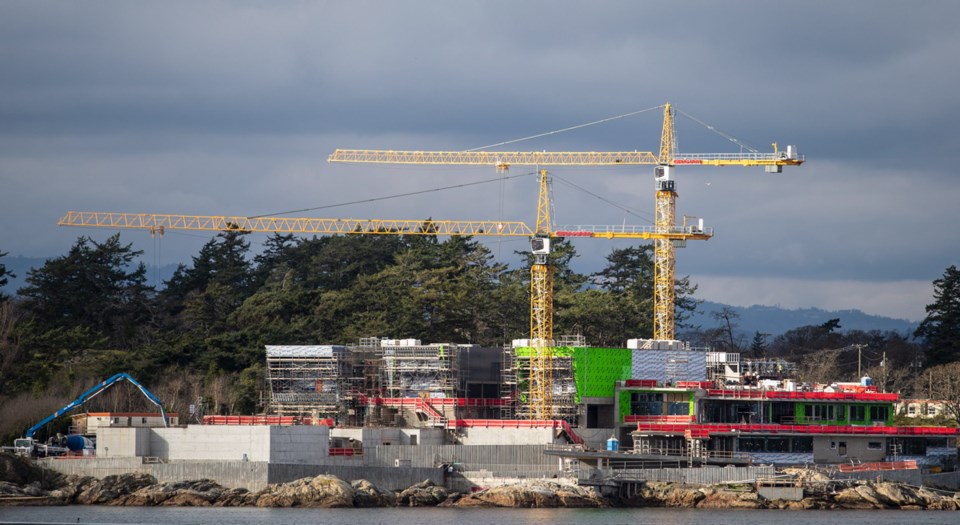A commentary by a former Victoria councillor and Capital Regional District director, who is the founder of Biosolid Free B.C.
After years of debate and discussion, local residents have developed a certain expertise in regards to the potential public health harms and environmental impacts of sewage sludge, otherwise known as “biosolids.”
Academic studies examining their impact on the local marine environment confirmed what many of us have long suspected — sewage is unquestionably harming the health of our oceans, and subsequently threatening human health as well. So why would it be any safer to expose our local farms, fields and or forests?
The Capital Regional District board has voted to overturn the ban on land application of biosolids, and is planning on applying biosolids as top cover at Hartland landfill. The board passed the motion without conducting any public consultation, and without meeting with or consulting any of the five bands whose territory would be affected.
When it comes to public and environmental health, it’s imperative to be truthful with local residents; we deserve the facts. The simple truth is that neither the Ministry of the Environment nor the CRD are proposing this to improve the local land environment any more than we’re currently dumping it into our oceans to grow bigger clams; provincial and CRD staff are looking for a “quick fix” to for a short-term problem, rather than looking for sustainable solutions that would respect the long-standing ban on land application, and protect the local environment.
While using sludge as ground cover at Hartland might seem like a reasonable approach with limited impacts on the local environment, the evidence is clear that biosolids simply do not stay where they are applied. Studies have found that when applied to land, the contaminants in biosolids become windborne, and can be transported dozens of kilometres from their site of application, threatening local animals, habitats, residents, and especially CRD staff at Hartland.
While we can’t expect all sides of this debate to agree with every study either for or against the land application of biosolids, there are a few things that we do know and can all agree on:
1. No one can claim that this is a safe practice. In fact, innumerable academic studies and CRD reports have found at least some level of risk in all parameters they examined. There is no existing research stating that the land application of biosolids is without risk to human and animal life or the environment, because it isn’t.
2. Secondly, the Dogwood Initiative, the Sierra Club of B.C., and the Island Organic Producers Association, the Island Chef’s Collaborative, the Farmlands’ Trust, and local First Nation bands all supported the original CRD ban. There is no public support for the land application of biosolids, and there is significant public opposition.
3. The land application of biosolids is the flashpoint of a huge controversy throughout Canada and around the world. As a UVic Environmental Law Society review from 2013 found, this practice has resulted in successful lawsuits by farmers and landowners impacted by biosolid application in Canada and the U.S., as well as bans on land application in Quebec and Ontario municipalities. If the current ban is overturned, there’s no reason to believe regional taxpayers will be insulated from legal liability and associated lawsuits.
So what are our options?
1. We can make the biosolids safer by putting in technologies to remove heavy metals, polycyclic aromatic hydrocarbons and pharmaceuticals, but the CRD has found this to be too expensive at this time.
2. We can turn biosolids into energy through proven technologies like gasification, which is among the CRD’s longer-term options.
3. We can ship these biosolids to cement kilns on the mainland for use as fuel, the current strategy.
4. We can ship biosolids to a biochar facility in Prince George where the carbon they carry can be safely sequestered and turned into a high value end-product.
The third option is the one that the CRD has chosen, but the cement kiln on the mainland needs to shut down for maintenance six weeks of the year, which is why staff and directors are looking for a sustainable alternative, and that’s where biochar comes in.
Converting our biosolids into biochar is by far the most affordable and environmentally friendly short-term solution for when the cement kilns are under maintenance.
It would re-affirm the CRD’s commitment to protect the ALR, the local environment and public health, while completely eliminating the inevitable legal liability and public backlash associated with the land application of biosolids at Hartland.
The province is considering biochar generation to address Vancouver’s municipal waste stream; it’s a proven, effective technology that can solve the CRD’s short term biosolid waste disposal issues right now.
CRD directors have failed to live up to their responsibility to act as environmental stewards for our region, and to engage in proper consultation on key regional issues.



